中国书法英文介绍ppt
- 格式:ppt
- 大小:1.43 MB
- 文档页数:14
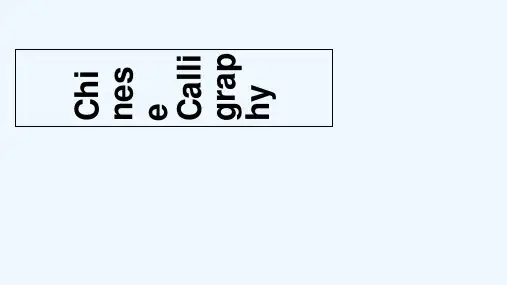
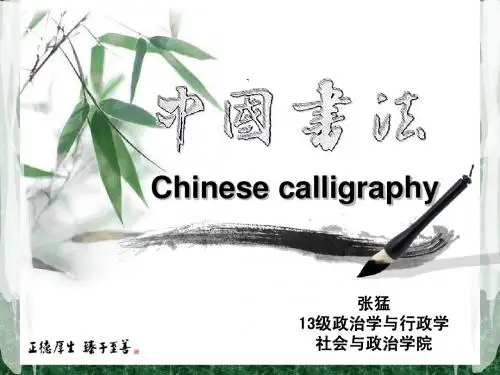
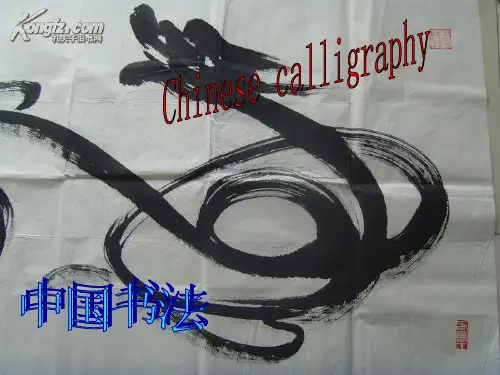

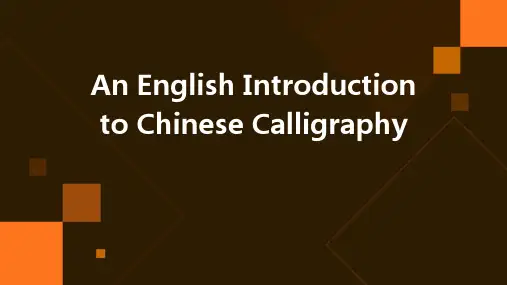


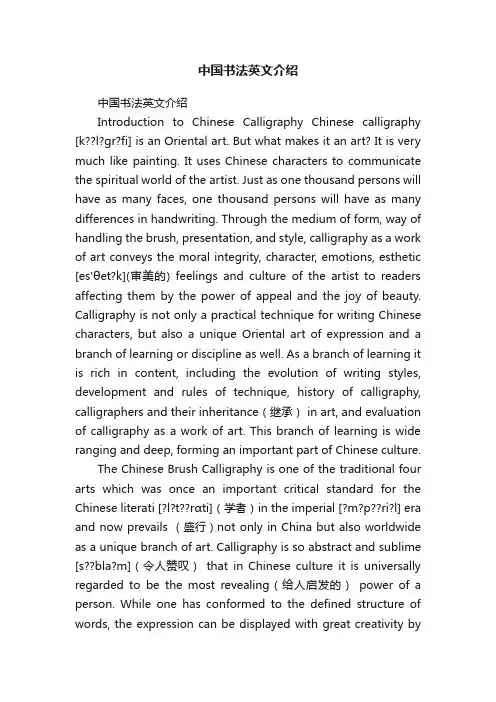
中国书法英文介绍中国书法英文介绍Introduction to Chinese Calligraphy Chinese calligraphy [k??l?ɡr?fi] is an Oriental art. But what makes it an art? It is very much like painting. It uses Chinese characters to communicate the spiritual world of the artist. Just as one thousand persons will have as many faces, one thousand persons will have as many differences in handwriting. Through the medium of form, way of handling the brush, presentation, and style, calligraphy as a work of art conveys the moral integrity, character, emotions, esthetic [es'θet?k](审美的) feelings and culture of the artist to readers affecting them by the power of appeal and the joy of beauty. Calligraphy is not only a practical technique for writing Chinese characters, but also a unique Oriental art of expression and a branch of learning or discipline as well. As a branch of learning it is rich in content, including the evolution of writing styles, development and rules of technique, history of calligraphy, calligraphers and their inheritance(继承) in art, and evaluation of calligraphy as a work of art. This branch of learning is wide ranging and deep, forming an important part of Chinese culture.The Chinese Brush Calligraphy is one of the traditional four arts which was once an important critical standard for the Chinese literati [?l?t??rɑti](学者)in the imperial [?m?p??ri?l] era and now prevails (盛行)not only in China but also worldwide as a unique branch of art. Calligraphy is so abstract and sublime [s??bla?m](令人赞叹)that in Chinese culture it is universally regarded to be the most revealing(给人启发的)power of a person. While one has conformed to the defined structure of words, the expression can be displayed with great creativity byindividuals. To become an artist or expert in calligraphy, one has to practice word by word and stroke by stroke until the spirit of the practice gets into one's mind. The Chinese brush calligraphy can temper a person into a state in which one can apply subconsciousness(下意识)got from the daily practice to control the concentration of ink and the compatibility[k?m?p?t??b?l?ti] (相符合)of font(字体) and size of each piece or word. In contrast to the Western calligraphy, diffusing ink blots and dry brush strokes(笔画) are viewed as a natural and free impromptu [?m?pr?mptju:](即兴) expression. All the varieties of the operation depend on the mental exercise that coordinates the mind and the body to perform the proper sense to choose the proper way in expressing the content of the passage. Calligraphy is considered as an active way of keeping one fit and health for the practice is either relaxing or self-entertaining. Historically, many calligraphy artists both in China and Japan were well known for their longevity[l?n?d?ev?ti](长寿).。
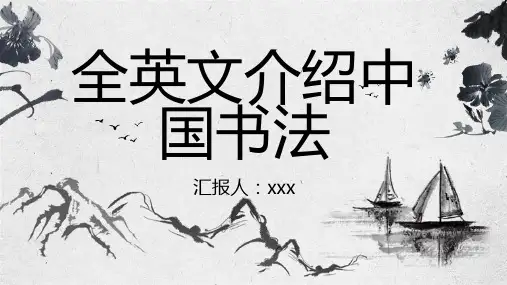
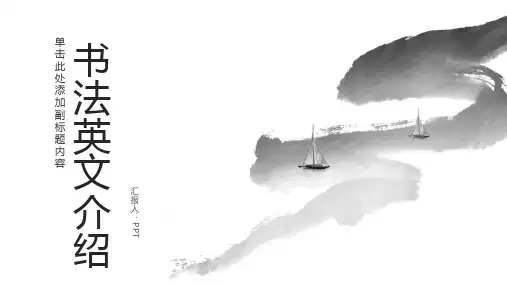
![中国书法英文介绍[优质ppt]](https://uimg.taocdn.com/a0e83c92a1c7aa00b52acbf0.webp)